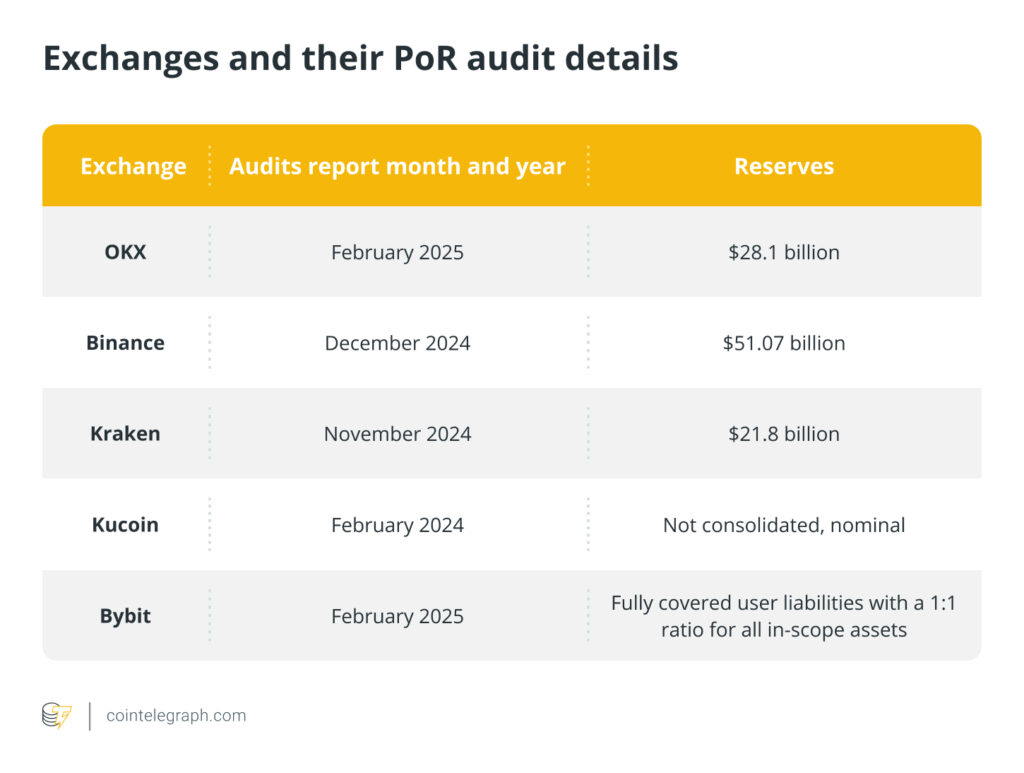The world of cryptocurrency is witnessing a significant transformation with the rise of proof-of-reserves (PoR) audits, a crucial mechanism aimed at enhancing transparency and trust among digital asset exchanges. These cryptographic verifications serve as a digital thumbs-up, confirming that exchanges like Coinbase are indeed holding the assets they claim, ensuring that user deposits are backed with real value. This initiative has gained momentum especially in the wake of major scandals, such as the collapse of FTX, which shone a spotlight on the need for rigorous financial accountability in the crypto space.
PoR audits utilize advanced cryptographic techniques, most notably Merkle trees and zero-knowledge (ZK) proofs, to verify asset holdings without compromising user privacy. Just as traditional finance mandates that banks maintain sufficient capital reserves to weather economic storms, PoR establishes a similar framework for cryptocurrency platforms but with unique challenges. While this system verifies assets, it falls short of providing a complete picture as it does not account for an exchange’s liabilities. This limitation can potentially create a deceptive sense of security, as users may mistakenly believe that an exchange is solvent when, in fact, it may carry hidden debts.
Take Coinbase’s cbBTC, for instance. This innovative product utilizes PoR to assure users that for every wrapped Bitcoin token, there is an equivalent Bitcoin securely held in custody. This transparent approach not only builds trust but also facilitates interaction with various decentralized applications and blockchain platforms, offering users flexibility without sacrificing security.
Despite the promise of PoR audits, they are not without their drawbacks. Auditors typically provide a snapshot of an exchange’s financial status at a single point in time, which doesn’t guarantee ongoing solvency. Additionally, the reliance on third-party auditing firms raises concerns about the potential biases and the integrity of these audits, as highlighted by the withdrawal of notable audit firms from the crypto sphere due to reliability issues. As the industry evolves, there’s an ongoing call for more standardized and robust auditing frameworks that could ensure not just the verification of assets, but also a clearer understanding of liabilities across the crypto landscape.
“Proof-of-reserves audits are a critical step in improving transparency in crypto markets, especially after past exchange failures like FTX. By integrating more advanced systems like zero-knowledge proofs, the industry might transition towards a more responsible financial ecosystem.”
Key Takeaways on Proof-of-Reserves Audits
Understanding Proof-of-Reserves (PoR) audits is essential for cryptocurrency users to navigate the digital asset market safely. Here are the key points:
- Proof-of-Reserves (PoR) Concept:
- PoR audits are cryptographic verifications enabling exchanges to prove they hold sufficient assets for user deposits.
- Uses methods like Merkle trees and zero-knowledge proofs for transparency.
- Importance in Cryptocurrency:
- After high-profile collapses like FTX, PoR audits promote trust and security in the crypto market.
- They reflect a growing emphasis on transparency analogous to capital requirements in traditional finance.
- Limitations of PoR Audits:
- PoR audits only verify asset holdings and do not account for liabilities, which can mislead users about an exchange’s actual solvency.
- Audits are periodic, providing a snapshot rather than real-time oversight, which can introduce risks of manipulation.
- Innovations in Audit Technology:
- Zero-knowledge (ZK) proofs are being explored to strengthen privacy and solvency verification of exchanges.
- Combining Merkle trees and ZK-proofs could pave the way for more comprehensive proof-of-solvency audits.
- Case Study: Coinbase’s cbBTC:
- Coinbase uses PoR to ensure that each cbBTC token is backed 1:1 by Bitcoin held in custody, reinforcing user trust.
- Audit reports confirm Coinbase’s Bitcoin reserves align with cbBTC tokens, ensuring secure transactions across platforms.
- Need for Independent Auditing:
- Reliance on third-party auditors raises concerns regarding the credibility of audits and potential biases in reporting.
- The withdrawal of auditing firms like Mazars from crypto services highlights the need for standardized auditing frameworks.
Recognizing these factors can significantly influence the decision-making process for individuals engaging with cryptocurrency exchanges, impacting their overall security and investment strategies in a rapidly evolving financial landscape.
Proof-of-Reserves: A New Standard for Crypto Transparency
The recent surge in proof-of-reserves (PoR) audits illuminates a pivotal shift in the cryptocurrency landscape, echoing principles from traditional finance but with notable distinctions. As exchanges increasingly adopt these audits, they aim to bolster trust and security amidst lingering skepticism from users. A prime example is Coinbase’s cbBTC, which employs PoR to confirm its 1:1 Bitcoin backing. While this initiative sets a strong precedent, some drawbacks persist that could impact various stakeholders in the ecosystem.
Competitive Advantages: The primary advantage of PoR audits lies in their ability to enhance transparency. This cryptographic verification method uses advanced techniques such as Merkle trees and zero-knowledge proofs, allowing exchanges to demonstrate they possess sufficient assets for user deposits without compromising sensitive data. As a result, companies utilizing these audits, like Coinbase, can cultivate a more trustworthy environment, potentially attracting cautious investors who may have previously avoided digital assets due to concerns about insolvency. Moreover, the shift toward PoR may foster a more robust regulatory landscape, benefiting the industry as a whole by encouraging compliance and better risk management.
Disadvantages and Challenges: On the downside, PoR audits do not paint a complete picture of an exchange’s financial health. The key limitation is their inability to account for liabilities, which means an exchange could still be at risk of insolvency even with verified assets. This shortcoming places customers at risk of overconfidence, reminiscent of the FTX collapse where past audits misled users about true financial conditions. Additionally, the reliance on occasional audits rather than real-time oversight creates a gap that could lead to manipulations or risks going unnoticed. This factor might deter users who seek assurance from financial practices akin to traditional banking regulations, which are more stringent and ongoing.
Stakeholder Impacts: The embrace of PoR audits could significantly benefit cautious investors and crypto enthusiasts, providing them with much-needed reassurance about exchange integrity. Conversely, it could create problems for exchanges that fail to adhere to these standards or those which only conduct sporadic audits. Such practices can leave them vulnerable to scrutiny from both users and regulatory bodies. Moreover, for crypto investors who are still skeptical, these audits may not suffice as a standalone assurance of safety, leading to ongoing hesitance in market participation. Overall, while PoR represents a critical advancement in crypto transparency, its effectiveness hinges on continuous improvement and comprehensive auditing practices to truly safeguard investor interests and instill confidence in the digital asset ecosystem.

















